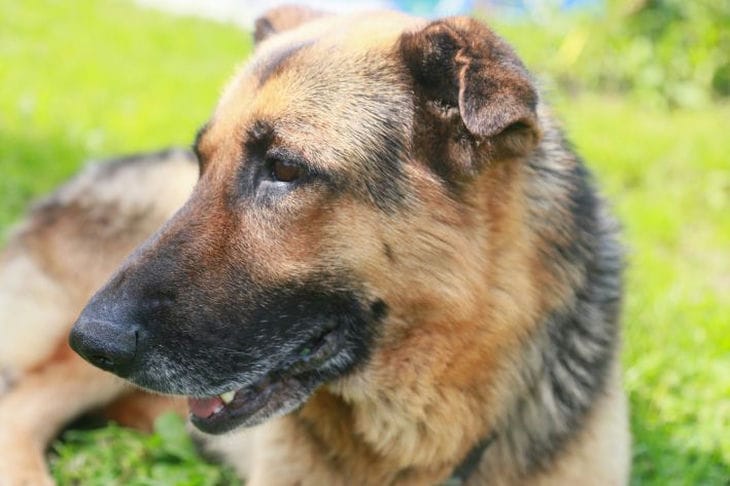No matter what commands you teach your pet, the basis for all of them is the complete and unquestioning submission of your pet to you, the owner.
In fact, submission to the owner (read: leader) is embedded in the dog at the instinctive level.
But with improper, unsystematic upbringing, such an uncontrollable dog can grow up that it will be difficult to even just keep it, not to mention teaching it commands.
Therefore, I would like to talk about the main points of developing submission and obedience (obedience) from puppyhood.
Before you begin training, study dog psychology and your pet's character.
So: a dog is a pack animal.

In a dog pack, a clear hierarchical order is formed, which determines the subordination and nature of the relationships between members of the pack.
Our pets live in a mixed pack of "people-dog/dogs" or "people-dog-other pets".
The dog subconsciously perceives the owner as the leader of the pack and obeys him. But interspecies differences in psychology cause the dog to misunderstand human behavior.
It often happens that you or your family members, unknowingly, give the dog signs that allow it to seize the throne of leadership in the family. And this is often fraught with serious consequences.
Dogs do not have human intelligence, so it is up to humans to learn to understand the psychology of their pets and make it easier for them to understand our actions.
Look at the life of a wolf pack: how does the leader behave? What is allowed and not allowed for other members of the pack? How is dominance and submission demonstrated? If you know the behavior of the leader, you will not make mistakes that allow the dog to doubt your role as a leader.
There are no trifles in the hierarchy. No leader will allow another member of the pack to start eating first, or to run ahead, or to enter a room first, or to lie down in the leader's place (only his mate has the right to do this).
Based on the laws of the pack hierarchy, correct your pet's behavior, help him take his allotted place in your community.
Stop disobedience and encroachment on your territory and your authority, demonstrate patronage only if the dog behaves correctly. In games, in training, on a walk, demonstrate to the dog that leadership and initiative belong only to you.
Signs of dominance in dog behavior:
- Starting to eat first; snatching food from hands; taking food from the table;
- Running into a room ahead of the owner;
- The habit of pulling on the leash, running ahead of the owner during a walk;
- The habit of placing paws on the chest (a clear demonstration of dominance);
- Growling at the owner or family members, biting hands and other parts of the body;
- Trying to sleep in the owner's place.
If you observe these signs in your dog’s behavior, stop these habits, show the dog that such behavior is only your privilege.
People often anthropomorphize their four-legged friends, but this is wrong: dogs are not people, and we must be aware of this difference and not associate dog psychology with human psychology.
When communicating with dogs, people fall into two extremes, both of which are wrong. The first is communicating with an animal as with a person, equal in intelligence. The second is perceiving a dog as a small child and behaving accordingly: cooing, permissiveness, indulging in weaknesses, turning a blind eye to behavioral shortcomings.
To achieve understanding and develop the right behavior tactics, it is important to know: a dog does not understand human language! It remembers only sound symbols, short keywords that mean some specific actions for it during the training process.
Owners often talk to their pets, addressing them with lengthy speeches, and the dog at this time looks attentively at the owner, diligently trying to catch in the flow of speech that very familiar key word. Therefore, it would be simpler and easier for the dog if the owner communicated with it with command words - simple and clear for understanding.
To better understand your pet, study dog body language:
- A dog wagging its tail is a sign that it is happy and content;
- A tail raised high means interest;
- Half-closed eyes - pleasure;
- Wide open eyes – aggression;
- Smile - friendly disposition;
- Raising a paw, flirting, dropping to the ground with front paws - the dog wants to play and is too distracted to learn.
In addition to general knowledge about dogs, observe your pet, study its behavior in different circumstances to better understand the character of your dog, understand what it likes, what it is interested in, what to expect from it, etc. Knowing the character, temperament and preferences of your pet, you will be able to adjust the general course of training taking into account the characteristics of your dog. And, of course, this knowledge will help you establish strong trusting relationships, without which the best recommendations for education will be useless.
The result of your proper training will be that the dog will respect the hierarchy in its relationships with people.
This implies complete submission to your demands, commands and prohibitions, absence of aggression and manipulative behavior towards you and your family members. Attempts of disobedience must be resolutely suppressed.
Be methodical and consistent: everything that is forbidden to your dog should always be forbidden! Any behavior that you want to eradicate should be stopped without exception. Options - "today it is forbidden, but tomorrow it is possible" - only confuse the dog and slow down or nullify the training.
Particularly sensitive owners (women are especially guilty of this) may feel that obedience training makes the dog unhappy, shackled within the framework of prohibitions, etc. On the contrary, if you are confident in your pet, you can trust it with more freedom than an uncontrolled dog with unreliable behavior.
If the owner is confident in his pet, he can safely walk him without a leash, let him go for a free run, allow him to frolic as much as he wants on a walk. On the contrary, a disobedient pet will then be limited in rights for the rest of his life due to his unreliability. As Suvorov said: "Hard in training - easy in battle"!
And, as you can see, indulgence and permissiveness ultimately turn against our favorites.
In order to make obedience training easier, you can't just prohibit all the time. Your puppy, like a child, doesn't like to always hear "no". In this case, he will simply start to ignore your demands.
In conditions of constant prohibitions and suppression, aggressiveness may develop in a dog. Therefore, it will be effective to offer your pet something alternative after the prohibition. For example, instead of a slipper that you forbade it to chew, offer a toy.
It is very important to maintain your pet's interest in learning through encouragement (words and treats) and play: learning should be interesting and evoke positive emotions.
In addition, you cannot turn training into a boring routine: change the environment, training subjects, tempo, etc., monitor the mood and physical condition of the dog, finish the training on a positive note. You can read more in the Basics of Education.
During the training, show your dog your joy and satisfaction with its successes in every possible way: there is no greater happiness for our loyal friends than bringing joy to the owner!
If there is love between you and your pet, then your satisfaction is almost a greater encouragement for him than a treat. The more positive emotions you demonstrate during training, the more the dog will try.
Earlier we wrote about which indoor flowers are dangerous for cats and dogs.








